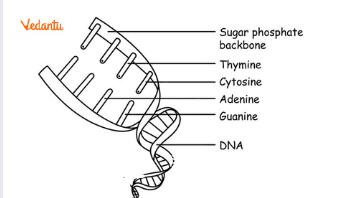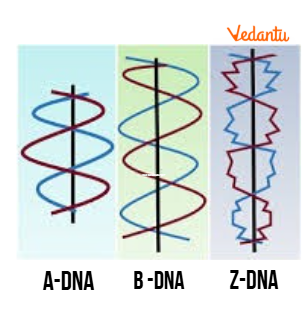How Does DNA’s Structure Influence Heredity and Cell Function?
Imagine trying to read a complex instruction manual that uses only four letters. That’s essentially how DNA works—every cell carries this four-letter code that determines traits from hair colour to disease resistance. DNA’s unique double-helix shape is like a spiralling ladder, packed inside microscopic cells. Yet it directs almost everything about an organism’s growth and function. Scientists have studied DNA for decades, from understanding its role in inheritance to decoding its DNA structure. And the more we learn, the more we realise how crucial it is to life on Earth and even to certain viruses. Whether you’re a budding scientist or just curious about biology, discovering the secrets of DNA helps unlock how life works at its most fundamental level.
Defining DNA and Its Components
DNA, or Deoxyribonucleic Acid, is the hereditary material found in nearly all living organisms and even some viruses. This DNA molecule comprises three primary components:
Sugar Group (Deoxyribose) – Forms the backbone of DNA in combination with phosphate.
Phosphate Group – Links sugars in a chain.
Nitrogenous Bases – Adenine (A), Thymine (T), Guanine (G), and Cytosine (C).

Together, these parts of DNA form the core framework needed for storing genetic information. When you look at the above-labelled DNA structure, you can see each base pair aligned like the steps of a staircase. These bases pair specifically (A with T, and C with G) to form the “rungs” of the DNA ladder. Thanks to these pairings, DNA’s double-helix shape is maintained, and the facts about DNA structure become clearer when visualised as a spiralling staircase.
Discovery and Significance
DNA was first identified by Swiss biologist Johannes Friedrich Miescher in 1869. However, the double-helix model came into focus much later, with James Watson and Francis Crick famously publishing their findings in 1953. This breakthrough revealed how genetic information could be stored and transmitted, showing how traits pass from parents to offspring. This discovery was pivotal in unveiling the fundamental characteristics of DNA that allow it to store and transmit genetic information. Since then, scientists have used DNA to understand diseases, develop medicines, and even explore ancestry.
Different Types of DNA
Under varying physiological conditions, the DNA molecule can assume multiple conformations, often referred to as different types of DNA:
A-DNA: Right-handed helix, often formed in dehydrated conditions.
B-DNA: Most common and stable conformation under normal cellular conditions.
Z-DNA: A left-handed helix with a zig-zag backbone, believed to be involved in regulating gene expression.

By exploring DNA’s conformations, researchers gain insights into everything from DNA as genetic material to how external factors might influence gene activity.
How DNA Replicates
In order for cells to multiply, DNA must duplicate. This process is covered in-depth in DNA Replication and typically follows three stages:
Initiation – Helicase unwinds the DNA strands.
Elongation – DNA polymerase matches bases to form a new strand.
Termination – Specific sequences signal the end of replication.
Each new cell then carries an exact copy of the original genetic information, guaranteeing consistency of traits and biological functions across generations.
Connecting DNA to the Genetic Code
The sequence of the four bases (A, T, G, C) in DNA dictates how amino acids form proteins. This sequence is collectively known as the genetic code. One essential function of DNA is to guide the synthesis of proteins, ensuring that each organism’s cells operate correctly. Changes or mutations in the base sequences can lead to variations in proteins, influencing traits and sometimes causing genetic disorders.
Real-World Applications of DNA
DNA’s role goes far beyond the classroom and research lab:
Healthcare: Gene therapy and genetic testing for inherited diseases
Forensic Science: DNA fingerprinting for crime investigation
Agriculture: Development of genetically modified crops for higher yields
Ancestry and Evolution: Tracing family lineages and evolutionary links
Understanding DNA paves the way for breakthroughs in biology and medicine, emphasising why it’s crucial for students and parents to grasp the basics.
Fun Facts About DNA Structure
If you stretched out all the DNA in your body, it could reach the Sun and back hundreds of times.
Almost 99.9% of human DNA sequences are identical among all humans, making each of us surprisingly similar at a genetic level.
Bacteria can exchange DNA in a process known as “horizontal gene transfer,” allowing them to quickly gain new traits like antibiotic resistance.
Interactive Quiz and Fun Task
Quiz Questions:
Which bases pair together in DNA?
Name the scientist who first identified DNA.
What is the shape of DNA called?
Which base is paired with Cytosine (C)?
In which cell organelle is mitochondrial DNA found?
Fun Task:
Create a family traits chart by asking your relatives about common characteristics such as eye colour, height, or hair type. Note any patterns and think about how these might be reflected in their DNA.
Check your answers:
Adenine pairs with Thymine, and Guanine pairs with Cytosine.
Johannes Friedrich Miescher.
Double helix.
Guanine (G).
Mitochondria.


FAQs on DNA Structure Made Simple: Key Types and Their Roles
1. What exactly is DNA and what are its fundamental building blocks?
DNA, short for Deoxyribonucleic Acid, is the molecule that carries the unique genetic instructions for the development, functioning, and reproduction of all known living things. It is constructed from smaller units called nucleotides. Each nucleotide is composed of a phosphate group, a deoxyribose sugar, and one of four nitrogenous bases: adenine (A), guanine (G), cytosine (C), or thymine (T).
2. Why is the DNA molecule often described as a 'double helix'?
The structure of DNA is called a double helix because it consists of two long strands that twist around each other to form a shape like a spiral staircase. The outer railings of this staircase are made of sugar-phosphate backbones, while the steps are formed by pairs of nitrogenous bases connected by hydrogen bonds.
3. What does the expression 'blueprint of life' mean when referring to DNA?
Calling DNA the 'blueprint of life' is an analogy to explain its function. Just as an architect's blueprint contains all the detailed instructions for constructing a building, DNA contains all the genetic information needed to build and maintain an organism. It dictates traits like eye colour, height, and how cells perform their specific jobs through protein synthesis.
4. How does the specific base pairing rule (A with T, and G with C) contribute to DNA's stability and function?
This strict pairing rule, known as Chargaff's rule, is vital for the DNA molecule's function. Firstly, it ensures that the genetic code can be copied with high accuracy during cell division, as each strand acts as a perfect template for the other. Secondly, it maintains a uniform width along the double helix, which provides structural stability and integrity to the entire molecule.
5. If all life uses DNA, what makes the DNA of a human different from that of a banana?
While the basic chemical components are the same, the key differences lie in three main areas:
- Sequence: The specific order of the A, T, C, and G bases is vastly different, creating unique genetic instructions for each organism.
- Quantity: A human genome contains significantly more DNA than a banana's genome.
- Organisation: In humans (eukaryotes), DNA is organised into multiple linear chromosomes stored inside a nucleus. In simpler organisms like bacteria, it is often a single circular chromosome in the cytoplasm.
6. What are the consequences of a mistake or 'mutation' in the DNA sequence?
A change in the DNA sequence is called a mutation. Its effects can range from harmless to severe. Some mutations have no impact, but others can change the instructions for making a protein. This might lead to a non-functional protein, potentially causing a genetic disorder, or it could introduce a new beneficial trait, which is a fundamental part of evolution.
7. Why is it important that the bonds holding the two DNA strands together are weak hydrogen bonds?
The fact that hydrogen bonds are relatively weak is critical. They are strong enough to hold the two strands together for stability but weak enough to be easily 'unzipped' by enzymes. This separation is essential for two core processes: DNA replication, where the DNA is copied, and transcription, where a gene is read to create a protein. Stronger bonds would make the genetic information inaccessible for these vital functions.
8. What are some real-world applications of understanding DNA's structure outside of forensics?
Understanding DNA's structure has revolutionised many fields. In medicine, it is the basis for gene therapy to treat genetic disorders and for developing targeted cancer treatments. In agriculture, it allows for genetic engineering of crops to improve yield and resist disease. It is also fundamental to paternity testing and tracking the evolution of species.










